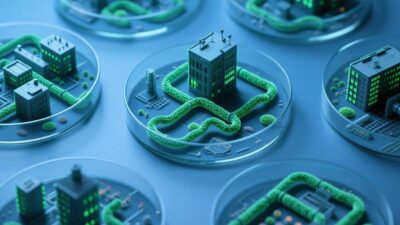Art Meets Neuroscience
Neural interface art merges cutting-edge brain-computer interfaces (BCIs) with digital creativity, enabling artists to craft works using their thoughts, emotions, or neural activity. By translating brain signals into visual, auditory, or tactile outputs, this field redefines artistic expression—turning mental imagery into tangible digital creations. This report explores its mechanics, applications, and ethical implications.
How Neural Interface Art Works
At its core, neural interface art relies on three pillars:
- Brain Data Capture: Non-invasive BCIs (e.g., EEG headsets) or invasive implants measure neural activity (brainwaves, blood flow) linked to thoughts, focus, or emotions.
- Signal Translation: Machine learning models (e.g., transformers, GANs) process raw neural data to identify patterns (e.g., “excitement” or “calm”) and map them to visual elements (colors, shapes) or sounds.
- Digital Output: The translated data generates real-time art—painting strokes, 3D sculptures, or music—via software like Blender or custom algorithms.
For example, an artist might visualize a sunset; the BCI detects their brain’s response to “warmth” and “vibrancy,” prompting the AI to render a digital canvas with golden hues and soft brushstrokes.
Applications: Beyond Traditional Creativity
- Therapeutic Art: Clinics use neural interfaces to help patients with PTSD or anxiety express suppressed emotions. A 2023 study showed that trauma survivors could externalize memories as abstract art via BCIs, aiding in healing.
- Design & Innovation: Architects and designers use thought-controlled tools to prototype ideas. A designer might “sketch” a chair in their mind; the BCI converts the neural blueprint into a 3D model, accelerating iteration.
- Interactive Installations: Museums deploy neural art to engage visitors. A viewer’s gaze or emotional response triggers dynamic digital artworks, creating personalized, immersive experiences.
Ethical Considerations
- Privacy: Neural data is highly personal. Unauthorized access to brainwave patterns could reveal sensitive information (e.g., mental health status), demanding strict encryption and consent protocols.
- Bias in AI: Machine learning models trained on limited datasets may misinterpret neural signals (e.g., associating “anger” with aggressive colors for some cultures but calmness for others).
- Creativity vs. Automation: Critics argue that relying on BCIs could reduce human agency, turning art into a “neural algorithm” rather than a deliberate choice.
Challenges & Future
- Technical Limits: Current BCIs have low resolution (e.g., EEG struggles to capture deep-brain activity) and latency, hindering real-time art creation.
- Accessibility: High costs (10,000 for advanced BCIs) and steep learning curves exclude many artists.
- Innovation Frontiers: Researchers are exploring non-invasive “dry” BCIs, AI that deciphers subconscious thoughts, and VR/AR integration for 3D neural art.
Redefining Artistic Expression
Neural interface art bridges neuroscience and creativity, empowering artists to manifest their inner worlds digitally. While challenges like privacy and accessibility persist, advancements in BCI tech and AI promise to unlock new frontiers—making art more intuitive, inclusive, and deeply personal. As the field evolves, it asks: What happens when our thoughts become our most powerful creative tool?



